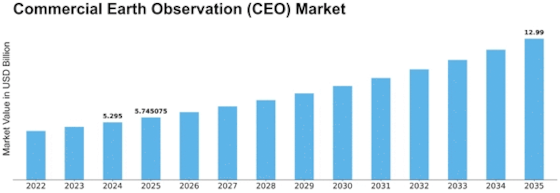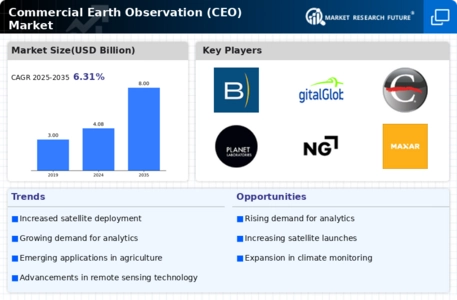-
EXECUTIVE SUMMARY
-
Market Overview
-
Key Findings
-
Market Segmentation
-
Competitive Landscape
-
Challenges and Opportunities
-
1.6.
-
Future Outlook
-
\r\n
-
MARKET INTRODUCTION
-
Definition
-
Scope of the study
- Research Objective
- Assumption
- Limitations
-
RESEARCH METHODOLOGY
-
Overview
-
3.2.
-
Data Mining
-
Secondary Research
-
Primary Research
- Breakdown of Primary
-
3.4.1.
-
Primary Interviews and Information Gathering Process
-
Respondents
-
Forecasting Model
-
Market Size Estimation
- Top-Down Approach
-
3.6.1.
-
Bottom-Up Approach
-
Data Triangulation
-
Validation
-
\r\n
-
MARKET DYNAMICS
-
Overview
-
Drivers
-
Restraints
-
Opportunities
-
MARKET
-
FACTOR ANALYSIS
-
Value chain Analysis
-
Porter's Five Forces
- Bargaining Power of Suppliers
- Bargaining Power
- Threat of New Entrants
- Threat of Substitutes
- Intensity of Rivalry
-
Analysis
-
of Buyers
-
COVID-19 Impact Analysis
- Regional Impact
- Opportunity and
-
5.3.1.
-
Market Impact Analysis
-
Threat Analysis
-
\r\n
-
COMMERCIAL EARTH OBSERVATION (CEO) MARKET,
-
BY APPLICATION (USD BILLION)
-
Agriculture
-
Forestry
-
6.3.
-
Urban Planning
-
Disaster Management
-
Environmental Monitoring
-
COMMERCIAL EARTH OBSERVATION (CEO) MARKET, BY DATA TYPE (USD BILLION)
-
Satellite Imagery
-
Aerial Imagery
-
LiDAR Data
-
7.4.
-
Ground-Based Data
-
COMMERCIAL EARTH OBSERVATION (CEO) MARKET, BY END USE
-
(USD BILLION)
-
Government
-
Commercial Enterprises
-
8.3.
-
Research Institutions
-
Non-Governmental Organizations
-
COMMERCIAL
-
EARTH OBSERVATION (CEO) MARKET, BY DEPLOYMENT MODEL (USD BILLION)
-
On-Premises
-
Cloud-Based
-
Hybrid
-
COMMERCIAL EARTH OBSERVATION
-
(CEO) MARKET, BY REGIONAL (USD BILLION)
-
North America
- Canada
-
10.1.1.
-
US
-
Europe
- Germany
- UK
- France
- Russia
- Italy
- Spain
- Rest of Europe
-
APAC
- China
- Japan
- South Korea
- Malaysia
- Indonesia
- Rest of APAC
-
10.3.2.
-
India
-
10.3.6.
-
Thailand
-
South America
- Brazil
- Mexico
- Argentina
-
10.4.4.
-
Rest of South America
-
MEA
- GCC Countries
- Rest of MEA
-
10.5.2.
-
South Africa
-
\r\n
-
COMPETITIVE LANDSCAPE
-
Overview
-
Competitive Analysis
-
Market share Analysis
-
Major Growth Strategy in the Commercial Earth Observation (CEO) Market
-
Competitive Benchmarking
-
Leading Players in Terms of Number
-
of Developments in the Commercial Earth Observation (CEO) Market
-
Key
- New Product Launch/Service Deployment
- Merger & Acquisitions
- Joint Ventures
- Sales and Operating Income
-
developments and growth strategies
-
11.8.
-
Major Players Financial Matrix
-
11.8.2.
-
Major Players R&D Expenditure. 2023
-
COMPANY PROFILES
-
BlackSky
- Financial Overview
- Products Offered
- Key
- SWOT Analysis
- Key Strategies
- Financial Overview
- Products Offered
- Key Developments
- SWOT Analysis
- Key Strategies
-
Developments
-
12.2.
-
DigitalGlobe
-
EAgile Technologies
- Financial Overview
- Products
- Key Developments
- SWOT Analysis
-
Offered
-
12.3.5.
-
Key Strategies
-
MDA
- Financial Overview
- Products
- Key Developments
- SWOT Analysis
-
Offered
-
12.4.5.
-
Key Strategies
-
Hughes Network Systems
- Financial Overview
- Products Offered
- Key Developments
- SWOT
- Key Strategies
-
Analysis
-
Planet Labs
- Financial
- Products Offered
- Key Developments
- Key Strategies
-
Overview
-
12.6.4.
-
SWOT Analysis
-
Sierra Nevada Corporation
- Financial Overview
- Products Offered
- Key
- SWOT Analysis
- Key Strategies
- Financial Overview
- Products Offered
- Key Developments
- SWOT Analysis
- Key Strategies
-
Developments
-
12.8.
-
Northrop Grumman
-
Maxar Technologies
- Financial Overview
- Products
- Key Developments
- SWOT Analysis
-
Offered
-
12.9.5.
-
Key Strategies
-
Siemens
- Financial Overview
- Key Developments
- SWOT Analysis
- Key Strategies
-
12.10.2.
-
Products Offered
-
Red Hen Systems
- Financial
- Products Offered
- Key Developments
- Key Strategies
-
Overview
-
12.11.4.
-
SWOT Analysis
-
Boeing
- Financial
- Products Offered
- Key Developments
- Key Strategies
-
Overview
-
12.12.4.
-
SWOT Analysis
-
Airbus Defence and Space
- Financial Overview
- Products Offered
- SWOT Analysis
- Key Strategies
-
12.13.3.
-
Key Developments
-
GeoIQ
- Financial Overview
- Products Offered
- Key Developments
- SWOT Analysis
- Key
-
Strategies
-
APPENDIX
-
References
-
Related Reports
-
\r\n
-
LIST OF TABLES
-
\r\nTABLE 1. LIST OF ASSUMPTIONS
-
TABLE
-
NORTH AMERICA COMMERCIAL EARTH OBSERVATION (CEO) MARKET SIZE ESTIMATES &
-
FORECAST, BY APPLICATION, 2019-2035 (USD BILLIONS)
-
NORTH AMERICA
-
COMMERCIAL EARTH OBSERVATION (CEO) MARKET SIZE ESTIMATES & FORECAST, BY DATA
-
TYPE, 2019-2035 (USD BILLIONS)
-
NORTH AMERICA COMMERCIAL EARTH OBSERVATION
-
(CEO) MARKET SIZE ESTIMATES & FORECAST, BY END USE, 2019-2035 (USD BILLIONS)
-
NORTH AMERICA COMMERCIAL EARTH OBSERVATION (CEO) MARKET SIZE ESTIMATES
-
& FORECAST, BY DEPLOYMENT MODEL, 2019-2035 (USD BILLIONS)
-
NORTH
-
AMERICA COMMERCIAL EARTH OBSERVATION (CEO) MARKET SIZE ESTIMATES & FORECAST,
-
BY REGIONAL, 2019-2035 (USD BILLIONS)
-
US COMMERCIAL EARTH OBSERVATION
-
(CEO) MARKET SIZE ESTIMATES & FORECAST, BY APPLICATION, 2019-2035 (USD BILLIONS)
-
US COMMERCIAL EARTH OBSERVATION (CEO) MARKET SIZE ESTIMATES &
-
FORECAST, BY DATA TYPE, 2019-2035 (USD BILLIONS)
-
US COMMERCIAL EARTH
-
OBSERVATION (CEO) MARKET SIZE ESTIMATES & FORECAST, BY END USE, 2019-2035 (USD
-
BILLIONS)
-
US COMMERCIAL EARTH OBSERVATION (CEO) MARKET SIZE ESTIMATES
-
& FORECAST, BY DEPLOYMENT MODEL, 2019-2035 (USD BILLIONS)
-
US
-
COMMERCIAL EARTH OBSERVATION (CEO) MARKET SIZE ESTIMATES & FORECAST, BY REGIONAL,
-
CANADA COMMERCIAL EARTH OBSERVATION (CEO)
-
MARKET SIZE ESTIMATES & FORECAST, BY APPLICATION, 2019-2035 (USD BILLIONS)
-
CANADA COMMERCIAL EARTH OBSERVATION (CEO) MARKET SIZE ESTIMATES &
-
FORECAST, BY DATA TYPE, 2019-2035 (USD BILLIONS)
-
CANADA COMMERCIAL
-
EARTH OBSERVATION (CEO) MARKET SIZE ESTIMATES & FORECAST, BY END USE, 2019-2035
-
(USD BILLIONS)
-
CANADA COMMERCIAL EARTH OBSERVATION (CEO) MARKET
-
SIZE ESTIMATES & FORECAST, BY DEPLOYMENT MODEL, 2019-2035 (USD BILLIONS)
-
CANADA COMMERCIAL EARTH OBSERVATION (CEO) MARKET SIZE ESTIMATES &
-
FORECAST, BY REGIONAL, 2019-2035 (USD BILLIONS)
-
EUROPE COMMERCIAL
-
EARTH OBSERVATION (CEO) MARKET SIZE ESTIMATES & FORECAST, BY APPLICATION, 2019-2035
-
(USD BILLIONS)
-
EUROPE COMMERCIAL EARTH OBSERVATION (CEO) MARKET
-
SIZE ESTIMATES & FORECAST, BY DATA TYPE, 2019-2035 (USD BILLIONS)
-
TABLE
-
EUROPE COMMERCIAL EARTH OBSERVATION (CEO) MARKET SIZE ESTIMATES & FORECAST,
-
BY END USE, 2019-2035 (USD BILLIONS)
-
EUROPE COMMERCIAL EARTH OBSERVATION
-
(CEO) MARKET SIZE ESTIMATES & FORECAST, BY DEPLOYMENT MODEL, 2019-2035 (USD
-
BILLIONS)
-
EUROPE COMMERCIAL EARTH OBSERVATION (CEO) MARKET SIZE
-
ESTIMATES & FORECAST, BY REGIONAL, 2019-2035 (USD BILLIONS)
-
TABLE 22.
-
GERMANY COMMERCIAL EARTH OBSERVATION (CEO) MARKET SIZE ESTIMATES & FORECAST,
-
BY APPLICATION, 2019-2035 (USD BILLIONS)
-
GERMANY COMMERCIAL EARTH
-
OBSERVATION (CEO) MARKET SIZE ESTIMATES & FORECAST, BY DATA TYPE, 2019-2035
-
(USD BILLIONS)
-
GERMANY COMMERCIAL EARTH OBSERVATION (CEO) MARKET
-
SIZE ESTIMATES & FORECAST, BY END USE, 2019-2035 (USD BILLIONS)
-
TABLE
-
GERMANY COMMERCIAL EARTH OBSERVATION (CEO) MARKET SIZE ESTIMATES & FORECAST,
-
BY DEPLOYMENT MODEL, 2019-2035 (USD BILLIONS)
-
GERMANY COMMERCIAL
-
EARTH OBSERVATION (CEO) MARKET SIZE ESTIMATES & FORECAST, BY REGIONAL, 2019-2035
-
(USD BILLIONS)
-
UK COMMERCIAL EARTH OBSERVATION (CEO) MARKET SIZE
-
ESTIMATES & FORECAST, BY APPLICATION, 2019-2035 (USD BILLIONS)
-
TABLE 28.
-
UK COMMERCIAL EARTH OBSERVATION (CEO) MARKET SIZE ESTIMATES & FORECAST, BY DATA
-
TYPE, 2019-2035 (USD BILLIONS)
-
UK COMMERCIAL EARTH OBSERVATION (CEO)
-
MARKET SIZE ESTIMATES & FORECAST, BY END USE, 2019-2035 (USD BILLIONS)
-
TABLE
-
UK COMMERCIAL EARTH OBSERVATION (CEO) MARKET SIZE ESTIMATES & FORECAST,
-
BY DEPLOYMENT MODEL, 2019-2035 (USD BILLIONS)
-
UK COMMERCIAL EARTH
-
OBSERVATION (CEO) MARKET SIZE ESTIMATES & FORECAST, BY REGIONAL, 2019-2035 (USD
-
BILLIONS)
-
FRANCE COMMERCIAL EARTH OBSERVATION (CEO) MARKET SIZE
-
ESTIMATES & FORECAST, BY APPLICATION, 2019-2035 (USD BILLIONS)
-
TABLE 33.
-
FRANCE COMMERCIAL EARTH OBSERVATION (CEO) MARKET SIZE ESTIMATES & FORECAST,
-
BY DATA TYPE, 2019-2035 (USD BILLIONS)
-
FRANCE COMMERCIAL EARTH OBSERVATION
-
(CEO) MARKET SIZE ESTIMATES & FORECAST, BY END USE, 2019-2035 (USD BILLIONS)
-
FRANCE COMMERCIAL EARTH OBSERVATION (CEO) MARKET SIZE ESTIMATES
-
& FORECAST, BY DEPLOYMENT MODEL, 2019-2035 (USD BILLIONS)
-
FRANCE
-
COMMERCIAL EARTH OBSERVATION (CEO) MARKET SIZE ESTIMATES & FORECAST, BY REGIONAL,
-
RUSSIA COMMERCIAL EARTH OBSERVATION (CEO)
-
MARKET SIZE ESTIMATES & FORECAST, BY APPLICATION, 2019-2035 (USD BILLIONS)
-
RUSSIA COMMERCIAL EARTH OBSERVATION (CEO) MARKET SIZE ESTIMATES &
-
FORECAST, BY DATA TYPE, 2019-2035 (USD BILLIONS)
-
RUSSIA COMMERCIAL
-
EARTH OBSERVATION (CEO) MARKET SIZE ESTIMATES & FORECAST, BY END USE, 2019-2035
-
(USD BILLIONS)
-
RUSSIA COMMERCIAL EARTH OBSERVATION (CEO) MARKET
-
SIZE ESTIMATES & FORECAST, BY DEPLOYMENT MODEL, 2019-2035 (USD BILLIONS)
-
RUSSIA COMMERCIAL EARTH OBSERVATION (CEO) MARKET SIZE ESTIMATES &
-
FORECAST, BY REGIONAL, 2019-2035 (USD BILLIONS)
-
ITALY COMMERCIAL
-
EARTH OBSERVATION (CEO) MARKET SIZE ESTIMATES & FORECAST, BY APPLICATION, 2019-2035
-
(USD BILLIONS)
-
ITALY COMMERCIAL EARTH OBSERVATION (CEO) MARKET SIZE
-
ESTIMATES & FORECAST, BY DATA TYPE, 2019-2035 (USD BILLIONS)
-
TABLE 44.
-
ITALY COMMERCIAL EARTH OBSERVATION (CEO) MARKET SIZE ESTIMATES & FORECAST, BY
-
END USE, 2019-2035 (USD BILLIONS)
-
ITALY COMMERCIAL EARTH OBSERVATION
-
(CEO) MARKET SIZE ESTIMATES & FORECAST, BY DEPLOYMENT MODEL, 2019-2035 (USD
-
BILLIONS)
-
ITALY COMMERCIAL EARTH OBSERVATION (CEO) MARKET SIZE ESTIMATES
-
& FORECAST, BY REGIONAL, 2019-2035 (USD BILLIONS)
-
SPAIN COMMERCIAL
-
EARTH OBSERVATION (CEO) MARKET SIZE ESTIMATES & FORECAST, BY APPLICATION, 2019-2035
-
(USD BILLIONS)
-
SPAIN COMMERCIAL EARTH OBSERVATION (CEO) MARKET SIZE
-
ESTIMATES & FORECAST, BY DATA TYPE, 2019-2035 (USD BILLIONS)
-
TABLE 49.
-
SPAIN COMMERCIAL EARTH OBSERVATION (CEO) MARKET SIZE ESTIMATES & FORECAST, BY
-
END USE, 2019-2035 (USD BILLIONS)
-
SPAIN COMMERCIAL EARTH OBSERVATION
-
(CEO) MARKET SIZE ESTIMATES & FORECAST, BY DEPLOYMENT MODEL, 2019-2035 (USD
-
BILLIONS)
-
SPAIN COMMERCIAL EARTH OBSERVATION (CEO) MARKET SIZE ESTIMATES
-
& FORECAST, BY REGIONAL, 2019-2035 (USD BILLIONS)
-
REST OF EUROPE
-
COMMERCIAL EARTH OBSERVATION (CEO) MARKET SIZE ESTIMATES & FORECAST, BY APPLICATION,
-
REST OF EUROPE COMMERCIAL EARTH OBSERVATION
-
(CEO) MARKET SIZE ESTIMATES & FORECAST, BY DATA TYPE, 2019-2035 (USD BILLIONS)
-
REST OF EUROPE COMMERCIAL EARTH OBSERVATION (CEO) MARKET SIZE ESTIMATES
-
& FORECAST, BY END USE, 2019-2035 (USD BILLIONS)
-
REST OF EUROPE
-
COMMERCIAL EARTH OBSERVATION (CEO) MARKET SIZE ESTIMATES & FORECAST, BY DEPLOYMENT
-
MODEL, 2019-2035 (USD BILLIONS)
-
REST OF EUROPE COMMERCIAL EARTH
-
OBSERVATION (CEO) MARKET SIZE ESTIMATES & FORECAST, BY REGIONAL, 2019-2035 (USD
-
BILLIONS)
-
APAC COMMERCIAL EARTH OBSERVATION (CEO) MARKET SIZE ESTIMATES
-
& FORECAST, BY APPLICATION, 2019-2035 (USD BILLIONS)
-
APAC COMMERCIAL
-
EARTH OBSERVATION (CEO) MARKET SIZE ESTIMATES & FORECAST, BY DATA TYPE, 2019-2035
-
(USD BILLIONS)
-
APAC COMMERCIAL EARTH OBSERVATION (CEO) MARKET SIZE
-
ESTIMATES & FORECAST, BY END USE, 2019-2035 (USD BILLIONS)
-
APAC
-
COMMERCIAL EARTH OBSERVATION (CEO) MARKET SIZE ESTIMATES & FORECAST, BY DEPLOYMENT
-
MODEL, 2019-2035 (USD BILLIONS)
-
APAC COMMERCIAL EARTH OBSERVATION
-
(CEO) MARKET SIZE ESTIMATES & FORECAST, BY REGIONAL, 2019-2035 (USD BILLIONS)
-
CHINA COMMERCIAL EARTH OBSERVATION (CEO) MARKET SIZE ESTIMATES &
-
FORECAST, BY APPLICATION, 2019-2035 (USD BILLIONS)
-
CHINA COMMERCIAL
-
EARTH OBSERVATION (CEO) MARKET SIZE ESTIMATES & FORECAST, BY DATA TYPE, 2019-2035
-
(USD BILLIONS)
-
CHINA COMMERCIAL EARTH OBSERVATION (CEO) MARKET SIZE
-
ESTIMATES & FORECAST, BY END USE, 2019-2035 (USD BILLIONS)
-
CHINA
-
COMMERCIAL EARTH OBSERVATION (CEO) MARKET SIZE ESTIMATES & FORECAST, BY DEPLOYMENT
-
MODEL, 2019-2035 (USD BILLIONS)
-
CHINA COMMERCIAL EARTH OBSERVATION
-
(CEO) MARKET SIZE ESTIMATES & FORECAST, BY REGIONAL, 2019-2035 (USD BILLIONS)
-
INDIA COMMERCIAL EARTH OBSERVATION (CEO) MARKET SIZE ESTIMATES &
-
FORECAST, BY APPLICATION, 2019-2035 (USD BILLIONS)
-
INDIA COMMERCIAL
-
EARTH OBSERVATION (CEO) MARKET SIZE ESTIMATES & FORECAST, BY DATA TYPE, 2019-2035
-
(USD BILLIONS)
-
INDIA COMMERCIAL EARTH OBSERVATION (CEO) MARKET SIZE
-
ESTIMATES & FORECAST, BY END USE, 2019-2035 (USD BILLIONS)
-
INDIA
-
COMMERCIAL EARTH OBSERVATION (CEO) MARKET SIZE ESTIMATES & FORECAST, BY DEPLOYMENT
-
MODEL, 2019-2035 (USD BILLIONS)
-
INDIA COMMERCIAL EARTH OBSERVATION
-
(CEO) MARKET SIZE ESTIMATES & FORECAST, BY REGIONAL, 2019-2035 (USD BILLIONS)
-
JAPAN COMMERCIAL EARTH OBSERVATION (CEO) MARKET SIZE ESTIMATES &
-
FORECAST, BY APPLICATION, 2019-2035 (USD BILLIONS)
-
JAPAN COMMERCIAL
-
EARTH OBSERVATION (CEO) MARKET SIZE ESTIMATES & FORECAST, BY DATA TYPE, 2019-2035
-
(USD BILLIONS)
-
JAPAN COMMERCIAL EARTH OBSERVATION (CEO) MARKET SIZE
-
ESTIMATES & FORECAST, BY END USE, 2019-2035 (USD BILLIONS)
-
JAPAN
-
COMMERCIAL EARTH OBSERVATION (CEO) MARKET SIZE ESTIMATES & FORECAST, BY DEPLOYMENT
-
MODEL, 2019-2035 (USD BILLIONS)
-
JAPAN COMMERCIAL EARTH OBSERVATION
-
(CEO) MARKET SIZE ESTIMATES & FORECAST, BY REGIONAL, 2019-2035 (USD BILLIONS)
-
SOUTH KOREA COMMERCIAL EARTH OBSERVATION (CEO) MARKET SIZE ESTIMATES
-
& FORECAST, BY APPLICATION, 2019-2035 (USD BILLIONS)
-
SOUTH KOREA
-
COMMERCIAL EARTH OBSERVATION (CEO) MARKET SIZE ESTIMATES & FORECAST, BY DATA
-
TYPE, 2019-2035 (USD BILLIONS)
-
SOUTH KOREA COMMERCIAL EARTH OBSERVATION
-
(CEO) MARKET SIZE ESTIMATES & FORECAST, BY END USE, 2019-2035 (USD BILLIONS)
-
SOUTH KOREA COMMERCIAL EARTH OBSERVATION (CEO) MARKET SIZE ESTIMATES
-
& FORECAST, BY DEPLOYMENT MODEL, 2019-2035 (USD BILLIONS)
-
SOUTH
-
KOREA COMMERCIAL EARTH OBSERVATION (CEO) MARKET SIZE ESTIMATES & FORECAST, BY
-
REGIONAL, 2019-2035 (USD BILLIONS)
-
MALAYSIA COMMERCIAL EARTH OBSERVATION
-
(CEO) MARKET SIZE ESTIMATES & FORECAST, BY APPLICATION, 2019-2035 (USD BILLIONS)
-
MALAYSIA COMMERCIAL EARTH OBSERVATION (CEO) MARKET SIZE ESTIMATES
-
& FORECAST, BY DATA TYPE, 2019-2035 (USD BILLIONS)
-
MALAYSIA
-
COMMERCIAL EARTH OBSERVATION (CEO) MARKET SIZE ESTIMATES & FORECAST, BY END
-
USE, 2019-2035 (USD BILLIONS)
-
MALAYSIA COMMERCIAL EARTH OBSERVATION
-
(CEO) MARKET SIZE ESTIMATES & FORECAST, BY DEPLOYMENT MODEL, 2019-2035 (USD
-
BILLIONS)
-
MALAYSIA COMMERCIAL EARTH OBSERVATION (CEO) MARKET SIZE
-
ESTIMATES & FORECAST, BY REGIONAL, 2019-2035 (USD BILLIONS)
-
TABLE 87.
-
THAILAND COMMERCIAL EARTH OBSERVATION (CEO) MARKET SIZE ESTIMATES & FORECAST,
-
BY APPLICATION, 2019-2035 (USD BILLIONS)
-
THAILAND COMMERCIAL EARTH
-
OBSERVATION (CEO) MARKET SIZE ESTIMATES & FORECAST, BY DATA TYPE, 2019-2035
-
(USD BILLIONS)
-
THAILAND COMMERCIAL EARTH OBSERVATION (CEO) MARKET
-
SIZE ESTIMATES & FORECAST, BY END USE, 2019-2035 (USD BILLIONS)
-
TABLE
-
THAILAND COMMERCIAL EARTH OBSERVATION (CEO) MARKET SIZE ESTIMATES & FORECAST,
-
BY DEPLOYMENT MODEL, 2019-2035 (USD BILLIONS)
-
THAILAND COMMERCIAL
-
EARTH OBSERVATION (CEO) MARKET SIZE ESTIMATES & FORECAST, BY REGIONAL, 2019-2035
-
(USD BILLIONS)
-
INDONESIA COMMERCIAL EARTH OBSERVATION (CEO) MARKET
-
SIZE ESTIMATES & FORECAST, BY APPLICATION, 2019-2035 (USD BILLIONS)
-
TABLE
-
INDONESIA COMMERCIAL EARTH OBSERVATION (CEO) MARKET SIZE ESTIMATES & FORECAST,
-
BY DATA TYPE, 2019-2035 (USD BILLIONS)
-
INDONESIA COMMERCIAL EARTH
-
OBSERVATION (CEO) MARKET SIZE ESTIMATES & FORECAST, BY END USE, 2019-2035 (USD
-
BILLIONS)
-
INDONESIA COMMERCIAL EARTH OBSERVATION (CEO) MARKET SIZE
-
ESTIMATES & FORECAST, BY DEPLOYMENT MODEL, 2019-2035 (USD BILLIONS)
-
TABLE
-
INDONESIA COMMERCIAL EARTH OBSERVATION (CEO) MARKET SIZE ESTIMATES & FORECAST,
-
BY REGIONAL, 2019-2035 (USD BILLIONS)
-
REST OF APAC COMMERCIAL EARTH
-
OBSERVATION (CEO) MARKET SIZE ESTIMATES & FORECAST, BY APPLICATION, 2019-2035
-
(USD BILLIONS)
-
REST OF APAC COMMERCIAL EARTH OBSERVATION (CEO) MARKET
-
SIZE ESTIMATES & FORECAST, BY DATA TYPE, 2019-2035 (USD BILLIONS)
-
TABLE
-
REST OF APAC COMMERCIAL EARTH OBSERVATION (CEO) MARKET SIZE ESTIMATES &
-
FORECAST, BY END USE, 2019-2035 (USD BILLIONS)
-
REST OF APAC COMMERCIAL
-
EARTH OBSERVATION (CEO) MARKET SIZE ESTIMATES & FORECAST, BY DEPLOYMENT MODEL,
-
REST OF APAC COMMERCIAL EARTH OBSERVATION
-
(CEO) MARKET SIZE ESTIMATES & FORECAST, BY REGIONAL, 2019-2035 (USD BILLIONS)
-
SOUTH AMERICA COMMERCIAL EARTH OBSERVATION (CEO) MARKET SIZE ESTIMATES
-
& FORECAST, BY APPLICATION, 2019-2035 (USD BILLIONS)
-
SOUTH
-
AMERICA COMMERCIAL EARTH OBSERVATION (CEO) MARKET SIZE ESTIMATES & FORECAST,
-
BY DATA TYPE, 2019-2035 (USD BILLIONS)
-
SOUTH AMERICA COMMERCIAL
-
EARTH OBSERVATION (CEO) MARKET SIZE ESTIMATES & FORECAST, BY END USE, 2019-2035
-
(USD BILLIONS)
-
SOUTH AMERICA COMMERCIAL EARTH OBSERVATION (CEO)
-
MARKET SIZE ESTIMATES & FORECAST, BY DEPLOYMENT MODEL, 2019-2035 (USD BILLIONS)
-
SOUTH AMERICA COMMERCIAL EARTH OBSERVATION (CEO) MARKET SIZE ESTIMATES
-
& FORECAST, BY REGIONAL, 2019-2035 (USD BILLIONS)
-
BRAZIL COMMERCIAL
-
EARTH OBSERVATION (CEO) MARKET SIZE ESTIMATES & FORECAST, BY APPLICATION, 2019-2035
-
(USD BILLIONS)
-
BRAZIL COMMERCIAL EARTH OBSERVATION (CEO) MARKET
-
SIZE ESTIMATES & FORECAST, BY DATA TYPE, 2019-2035 (USD BILLIONS)
-
TABLE
-
BRAZIL COMMERCIAL EARTH OBSERVATION (CEO) MARKET SIZE ESTIMATES & FORECAST,
-
BY END USE, 2019-2035 (USD BILLIONS)
-
BRAZIL COMMERCIAL EARTH OBSERVATION
-
(CEO) MARKET SIZE ESTIMATES & FORECAST, BY DEPLOYMENT MODEL, 2019-2035 (USD
-
BILLIONS)
-
BRAZIL COMMERCIAL EARTH OBSERVATION (CEO) MARKET SIZE
-
ESTIMATES & FORECAST, BY REGIONAL, 2019-2035 (USD BILLIONS)
-
TABLE 112.
-
MEXICO COMMERCIAL EARTH OBSERVATION (CEO) MARKET SIZE ESTIMATES & FORECAST,
-
BY APPLICATION, 2019-2035 (USD BILLIONS)
-
MEXICO COMMERCIAL EARTH
-
OBSERVATION (CEO) MARKET SIZE ESTIMATES & FORECAST, BY DATA TYPE, 2019-2035
-
(USD BILLIONS)
-
MEXICO COMMERCIAL EARTH OBSERVATION (CEO) MARKET
-
SIZE ESTIMATES & FORECAST, BY END USE, 2019-2035 (USD BILLIONS)
-
TABLE
-
MEXICO COMMERCIAL EARTH OBSERVATION (CEO) MARKET SIZE ESTIMATES & FORECAST,
-
BY DEPLOYMENT MODEL, 2019-2035 (USD BILLIONS)
-
MEXICO COMMERCIAL
-
EARTH OBSERVATION (CEO) MARKET SIZE ESTIMATES & FORECAST, BY REGIONAL, 2019-2035
-
(USD BILLIONS)
-
ARGENTINA COMMERCIAL EARTH OBSERVATION (CEO) MARKET
-
SIZE ESTIMATES & FORECAST, BY APPLICATION, 2019-2035 (USD BILLIONS)
-
TABLE
-
ARGENTINA COMMERCIAL EARTH OBSERVATION (CEO) MARKET SIZE ESTIMATES & FORECAST,
-
BY DATA TYPE, 2019-2035 (USD BILLIONS)
-
ARGENTINA COMMERCIAL EARTH
-
OBSERVATION (CEO) MARKET SIZE ESTIMATES & FORECAST, BY END USE, 2019-2035 (USD
-
BILLIONS)
-
ARGENTINA COMMERCIAL EARTH OBSERVATION (CEO) MARKET SIZE
-
ESTIMATES & FORECAST, BY DEPLOYMENT MODEL, 2019-2035 (USD BILLIONS)
-
TABLE
-
ARGENTINA COMMERCIAL EARTH OBSERVATION (CEO) MARKET SIZE ESTIMATES & FORECAST,
-
BY REGIONAL, 2019-2035 (USD BILLIONS)
-
REST OF SOUTH AMERICA COMMERCIAL
-
EARTH OBSERVATION (CEO) MARKET SIZE ESTIMATES & FORECAST, BY APPLICATION, 2019-2035
-
(USD BILLIONS)
-
REST OF SOUTH AMERICA COMMERCIAL EARTH OBSERVATION
-
(CEO) MARKET SIZE ESTIMATES & FORECAST, BY DATA TYPE, 2019-2035 (USD BILLIONS)
-
REST OF SOUTH AMERICA COMMERCIAL EARTH OBSERVATION (CEO) MARKET
-
SIZE ESTIMATES & FORECAST, BY END USE, 2019-2035 (USD BILLIONS)
-
TABLE
-
REST OF SOUTH AMERICA COMMERCIAL EARTH OBSERVATION (CEO) MARKET SIZE ESTIMATES
-
& FORECAST, BY DEPLOYMENT MODEL, 2019-2035 (USD BILLIONS)
-
REST
-
OF SOUTH AMERICA COMMERCIAL EARTH OBSERVATION (CEO) MARKET SIZE ESTIMATES &
-
FORECAST, BY REGIONAL, 2019-2035 (USD BILLIONS)
-
MEA COMMERCIAL
-
EARTH OBSERVATION (CEO) MARKET SIZE ESTIMATES & FORECAST, BY APPLICATION, 2019-2035
-
(USD BILLIONS)
-
MEA COMMERCIAL EARTH OBSERVATION (CEO) MARKET SIZE
-
ESTIMATES & FORECAST, BY DATA TYPE, 2019-2035 (USD BILLIONS)
-
TABLE 129.
-
MEA COMMERCIAL EARTH OBSERVATION (CEO) MARKET SIZE ESTIMATES & FORECAST, BY
-
END USE, 2019-2035 (USD BILLIONS)
-
MEA COMMERCIAL EARTH OBSERVATION
-
(CEO) MARKET SIZE ESTIMATES & FORECAST, BY DEPLOYMENT MODEL, 2019-2035 (USD
-
BILLIONS)
-
MEA COMMERCIAL EARTH OBSERVATION (CEO) MARKET SIZE ESTIMATES
-
& FORECAST, BY REGIONAL, 2019-2035 (USD BILLIONS)
-
GCC COUNTRIES
-
COMMERCIAL EARTH OBSERVATION (CEO) MARKET SIZE ESTIMATES & FORECAST, BY APPLICATION,
-
GCC COUNTRIES COMMERCIAL EARTH OBSERVATION
-
(CEO) MARKET SIZE ESTIMATES & FORECAST, BY DATA TYPE, 2019-2035 (USD BILLIONS)
-
GCC COUNTRIES COMMERCIAL EARTH OBSERVATION (CEO) MARKET SIZE ESTIMATES
-
& FORECAST, BY END USE, 2019-2035 (USD BILLIONS)
-
GCC COUNTRIES
-
COMMERCIAL EARTH OBSERVATION (CEO) MARKET SIZE ESTIMATES & FORECAST, BY DEPLOYMENT
-
MODEL, 2019-2035 (USD BILLIONS)
-
GCC COUNTRIES COMMERCIAL EARTH
-
OBSERVATION (CEO) MARKET SIZE ESTIMATES & FORECAST, BY REGIONAL, 2019-2035 (USD
-
BILLIONS)
-
SOUTH AFRICA COMMERCIAL EARTH OBSERVATION (CEO) MARKET
-
SIZE ESTIMATES & FORECAST, BY APPLICATION, 2019-2035 (USD BILLIONS)
-
TABLE
-
SOUTH AFRICA COMMERCIAL EARTH OBSERVATION (CEO) MARKET SIZE ESTIMATES &
-
FORECAST, BY DATA TYPE, 2019-2035 (USD BILLIONS)
-
SOUTH AFRICA COMMERCIAL
-
EARTH OBSERVATION (CEO) MARKET SIZE ESTIMATES & FORECAST, BY END USE, 2019-2035
-
(USD BILLIONS)
-
SOUTH AFRICA COMMERCIAL EARTH OBSERVATION (CEO)
-
MARKET SIZE ESTIMATES & FORECAST, BY DEPLOYMENT MODEL, 2019-2035 (USD BILLIONS)
-
SOUTH AFRICA COMMERCIAL EARTH OBSERVATION (CEO) MARKET SIZE ESTIMATES
-
& FORECAST, BY REGIONAL, 2019-2035 (USD BILLIONS)
-
REST OF MEA
-
COMMERCIAL EARTH OBSERVATION (CEO) MARKET SIZE ESTIMATES & FORECAST, BY APPLICATION,
-
REST OF MEA COMMERCIAL EARTH OBSERVATION
-
(CEO) MARKET SIZE ESTIMATES & FORECAST, BY DATA TYPE, 2019-2035 (USD BILLIONS)
-
REST OF MEA COMMERCIAL EARTH OBSERVATION (CEO) MARKET SIZE ESTIMATES
-
& FORECAST, BY END USE, 2019-2035 (USD BILLIONS)
-
REST OF MEA
-
COMMERCIAL EARTH OBSERVATION (CEO) MARKET SIZE ESTIMATES & FORECAST, BY DEPLOYMENT
-
MODEL, 2019-2035 (USD BILLIONS)
-
REST OF MEA COMMERCIAL EARTH OBSERVATION
-
(CEO) MARKET SIZE ESTIMATES & FORECAST, BY REGIONAL, 2019-2035 (USD BILLIONS)
-
PRODUCT LAUNCH/PRODUCT DEVELOPMENT/APPROVAL
-
ACQUISITION/PARTNERSHIP
-
\r\n
-
\r\nLIST
-
OF FIGURES
-
\r\nFIGURE 1. MARKET SYNOPSIS
-
NORTH AMERICA
-
COMMERCIAL EARTH OBSERVATION (CEO) MARKET ANALYSIS
-
US COMMERCIAL
-
EARTH OBSERVATION (CEO) MARKET ANALYSIS BY APPLICATION
-
US COMMERCIAL
-
EARTH OBSERVATION (CEO) MARKET ANALYSIS BY DATA TYPE
-
US COMMERCIAL
-
EARTH OBSERVATION (CEO) MARKET ANALYSIS BY END USE
-
US COMMERCIAL
-
EARTH OBSERVATION (CEO) MARKET ANALYSIS BY DEPLOYMENT MODEL
-
US COMMERCIAL
-
EARTH OBSERVATION (CEO) MARKET ANALYSIS BY REGIONAL
-
CANADA COMMERCIAL
-
EARTH OBSERVATION (CEO) MARKET ANALYSIS BY APPLICATION
-
CANADA COMMERCIAL
-
EARTH OBSERVATION (CEO) MARKET ANALYSIS BY DATA TYPE
-
CANADA COMMERCIAL
-
EARTH OBSERVATION (CEO) MARKET ANALYSIS BY END USE
-
CANADA COMMERCIAL
-
EARTH OBSERVATION (CEO) MARKET ANALYSIS BY DEPLOYMENT MODEL
-
CANADA
-
COMMERCIAL EARTH OBSERVATION (CEO) MARKET ANALYSIS BY REGIONAL
-
FIGURE 13.
-
EUROPE COMMERCIAL EARTH OBSERVATION (CEO) MARKET ANALYSIS
-
GERMANY
-
COMMERCIAL EARTH OBSERVATION (CEO) MARKET ANALYSIS BY APPLICATION
-
FIGURE 15.
-
GERMANY COMMERCIAL EARTH OBSERVATION (CEO) MARKET ANALYSIS BY DATA TYPE
-
FIGURE
-
GERMANY COMMERCIAL EARTH OBSERVATION (CEO) MARKET ANALYSIS BY END USE
-
FIGURE
-
GERMANY COMMERCIAL EARTH OBSERVATION (CEO) MARKET ANALYSIS BY DEPLOYMENT MODEL
-
GERMANY COMMERCIAL EARTH OBSERVATION (CEO) MARKET ANALYSIS BY REGIONAL
-
UK COMMERCIAL EARTH OBSERVATION (CEO) MARKET ANALYSIS BY APPLICATION
-
UK COMMERCIAL EARTH OBSERVATION (CEO) MARKET ANALYSIS BY DATA TYPE
-
UK COMMERCIAL EARTH OBSERVATION (CEO) MARKET ANALYSIS BY END USE
-
UK COMMERCIAL EARTH OBSERVATION (CEO) MARKET ANALYSIS BY DEPLOYMENT
-
MODEL
-
UK COMMERCIAL EARTH OBSERVATION (CEO) MARKET ANALYSIS BY
-
REGIONAL
-
FRANCE COMMERCIAL EARTH OBSERVATION (CEO) MARKET ANALYSIS
-
BY APPLICATION
-
FRANCE COMMERCIAL EARTH OBSERVATION (CEO) MARKET
-
ANALYSIS BY DATA TYPE
-
FRANCE COMMERCIAL EARTH OBSERVATION (CEO)
-
MARKET ANALYSIS BY END USE
-
FRANCE COMMERCIAL EARTH OBSERVATION
-
(CEO) MARKET ANALYSIS BY DEPLOYMENT MODEL
-
FRANCE COMMERCIAL EARTH
-
OBSERVATION (CEO) MARKET ANALYSIS BY REGIONAL
-
RUSSIA COMMERCIAL
-
EARTH OBSERVATION (CEO) MARKET ANALYSIS BY APPLICATION
-
RUSSIA COMMERCIAL
-
EARTH OBSERVATION (CEO) MARKET ANALYSIS BY DATA TYPE
-
RUSSIA COMMERCIAL
-
EARTH OBSERVATION (CEO) MARKET ANALYSIS BY END USE
-
RUSSIA COMMERCIAL
-
EARTH OBSERVATION (CEO) MARKET ANALYSIS BY DEPLOYMENT MODEL
-
RUSSIA
-
COMMERCIAL EARTH OBSERVATION (CEO) MARKET ANALYSIS BY REGIONAL
-
FIGURE 34.
-
ITALY COMMERCIAL EARTH OBSERVATION (CEO) MARKET ANALYSIS BY APPLICATION
-
FIGURE
-
ITALY COMMERCIAL EARTH OBSERVATION (CEO) MARKET ANALYSIS BY DATA TYPE
-
FIGURE
-
ITALY COMMERCIAL EARTH OBSERVATION (CEO) MARKET ANALYSIS BY END USE
-
FIGURE
-
ITALY COMMERCIAL EARTH OBSERVATION (CEO) MARKET ANALYSIS BY DEPLOYMENT MODEL
-
ITALY COMMERCIAL EARTH OBSERVATION (CEO) MARKET ANALYSIS BY REGIONAL
-
SPAIN COMMERCIAL EARTH OBSERVATION (CEO) MARKET ANALYSIS BY APPLICATION
-
SPAIN COMMERCIAL EARTH OBSERVATION (CEO) MARKET ANALYSIS BY DATA
-
TYPE
-
SPAIN COMMERCIAL EARTH OBSERVATION (CEO) MARKET ANALYSIS BY
-
END USE
-
SPAIN COMMERCIAL EARTH OBSERVATION (CEO) MARKET ANALYSIS
-
BY DEPLOYMENT MODEL
-
SPAIN COMMERCIAL EARTH OBSERVATION (CEO) MARKET
-
ANALYSIS BY REGIONAL
-
REST OF EUROPE COMMERCIAL EARTH OBSERVATION
-
(CEO) MARKET ANALYSIS BY APPLICATION
-
REST OF EUROPE COMMERCIAL
-
EARTH OBSERVATION (CEO) MARKET ANALYSIS BY DATA TYPE
-
REST OF EUROPE
-
COMMERCIAL EARTH OBSERVATION (CEO) MARKET ANALYSIS BY END USE
-
REST
-
OF EUROPE COMMERCIAL EARTH OBSERVATION (CEO) MARKET ANALYSIS BY DEPLOYMENT MODEL
-
REST OF EUROPE COMMERCIAL EARTH OBSERVATION (CEO) MARKET ANALYSIS
-
BY REGIONAL
-
APAC COMMERCIAL EARTH OBSERVATION (CEO) MARKET ANALYSIS
-
CHINA COMMERCIAL EARTH OBSERVATION (CEO) MARKET ANALYSIS BY APPLICATION
-
CHINA COMMERCIAL EARTH OBSERVATION (CEO) MARKET ANALYSIS BY DATA
-
TYPE
-
CHINA COMMERCIAL EARTH OBSERVATION (CEO) MARKET ANALYSIS BY
-
END USE
-
CHINA COMMERCIAL EARTH OBSERVATION (CEO) MARKET ANALYSIS
-
BY DEPLOYMENT MODEL
-
CHINA COMMERCIAL EARTH OBSERVATION (CEO) MARKET
-
ANALYSIS BY REGIONAL
-
INDIA COMMERCIAL EARTH OBSERVATION (CEO) MARKET
-
ANALYSIS BY APPLICATION
-
INDIA COMMERCIAL EARTH OBSERVATION (CEO)
-
MARKET ANALYSIS BY DATA TYPE
-
INDIA COMMERCIAL EARTH OBSERVATION
-
(CEO) MARKET ANALYSIS BY END USE
-
INDIA COMMERCIAL EARTH OBSERVATION
-
(CEO) MARKET ANALYSIS BY DEPLOYMENT MODEL
-
INDIA COMMERCIAL EARTH
-
OBSERVATION (CEO) MARKET ANALYSIS BY REGIONAL
-
JAPAN COMMERCIAL
-
EARTH OBSERVATION (CEO) MARKET ANALYSIS BY APPLICATION
-
JAPAN COMMERCIAL
-
EARTH OBSERVATION (CEO) MARKET ANALYSIS BY DATA TYPE
-
JAPAN COMMERCIAL
-
EARTH OBSERVATION (CEO) MARKET ANALYSIS BY END USE
-
JAPAN COMMERCIAL
-
EARTH OBSERVATION (CEO) MARKET ANALYSIS BY DEPLOYMENT MODEL
-
JAPAN
-
COMMERCIAL EARTH OBSERVATION (CEO) MARKET ANALYSIS BY REGIONAL
-
FIGURE 65.
-
SOUTH KOREA COMMERCIAL EARTH OBSERVATION (CEO) MARKET ANALYSIS BY APPLICATION
-
SOUTH KOREA COMMERCIAL EARTH OBSERVATION (CEO) MARKET ANALYSIS BY DATA
-
TYPE
-
SOUTH KOREA COMMERCIAL EARTH OBSERVATION (CEO) MARKET ANALYSIS
-
BY END USE
-
SOUTH KOREA COMMERCIAL EARTH OBSERVATION (CEO) MARKET
-
ANALYSIS BY DEPLOYMENT MODEL
-
SOUTH KOREA COMMERCIAL EARTH OBSERVATION
-
(CEO) MARKET ANALYSIS BY REGIONAL
-
MALAYSIA COMMERCIAL EARTH OBSERVATION
-
(CEO) MARKET ANALYSIS BY APPLICATION
-
MALAYSIA COMMERCIAL EARTH
-
OBSERVATION (CEO) MARKET ANALYSIS BY DATA TYPE
-
MALAYSIA COMMERCIAL
-
EARTH OBSERVATION (CEO) MARKET ANALYSIS BY END USE
-
MALAYSIA COMMERCIAL
-
EARTH OBSERVATION (CEO) MARKET ANALYSIS BY DEPLOYMENT MODEL
-
MALAYSIA
-
COMMERCIAL EARTH OBSERVATION (CEO) MARKET ANALYSIS BY REGIONAL
-
FIGURE 75.
-
THAILAND COMMERCIAL EARTH OBSERVATION (CEO) MARKET ANALYSIS BY APPLICATION
-
FIGURE
-
THAILAND COMMERCIAL EARTH OBSERVATION (CEO) MARKET ANALYSIS BY DATA TYPE
-
THAILAND COMMERCIAL EARTH OBSERVATION (CEO) MARKET ANALYSIS BY END
-
USE
-
THAILAND COMMERCIAL EARTH OBSERVATION (CEO) MARKET ANALYSIS
-
BY DEPLOYMENT MODEL
-
THAILAND COMMERCIAL EARTH OBSERVATION (CEO)
-
MARKET ANALYSIS BY REGIONAL
-
INDONESIA COMMERCIAL EARTH OBSERVATION
-
(CEO) MARKET ANALYSIS BY APPLICATION
-
INDONESIA COMMERCIAL EARTH
-
OBSERVATION (CEO) MARKET ANALYSIS BY DATA TYPE
-
INDONESIA COMMERCIAL
-
EARTH OBSERVATION (CEO) MARKET ANALYSIS BY END USE
-
INDONESIA COMMERCIAL
-
EARTH OBSERVATION (CEO) MARKET ANALYSIS BY DEPLOYMENT MODEL
-
INDONESIA
-
COMMERCIAL EARTH OBSERVATION (CEO) MARKET ANALYSIS BY REGIONAL
-
FIGURE 85.
-
REST OF APAC COMMERCIAL EARTH OBSERVATION (CEO) MARKET ANALYSIS BY APPLICATION
-
REST OF APAC COMMERCIAL EARTH OBSERVATION (CEO) MARKET ANALYSIS BY
-
DATA TYPE
-
REST OF APAC COMMERCIAL EARTH OBSERVATION (CEO) MARKET
-
ANALYSIS BY END USE
-
REST OF APAC COMMERCIAL EARTH OBSERVATION (CEO)
-
MARKET ANALYSIS BY DEPLOYMENT MODEL
-
REST OF APAC COMMERCIAL EARTH
-
OBSERVATION (CEO) MARKET ANALYSIS BY REGIONAL
-
SOUTH AMERICA COMMERCIAL
-
EARTH OBSERVATION (CEO) MARKET ANALYSIS
-
BRAZIL COMMERCIAL EARTH
-
OBSERVATION (CEO) MARKET ANALYSIS BY APPLICATION
-
BRAZIL COMMERCIAL
-
EARTH OBSERVATION (CEO) MARKET ANALYSIS BY DATA TYPE
-
BRAZIL COMMERCIAL
-
EARTH OBSERVATION (CEO) MARKET ANALYSIS BY END USE
-
BRAZIL COMMERCIAL
-
EARTH OBSERVATION (CEO) MARKET ANALYSIS BY DEPLOYMENT MODEL
-
BRAZIL
-
COMMERCIAL EARTH OBSERVATION (CEO) MARKET ANALYSIS BY REGIONAL
-
FIGURE 96.
-
MEXICO COMMERCIAL EARTH OBSERVATION (CEO) MARKET ANALYSIS BY APPLICATION
-
FIGURE
-
MEXICO COMMERCIAL EARTH OBSERVATION (CEO) MARKET ANALYSIS BY DATA TYPE
-
FIGURE
-
MEXICO COMMERCIAL EARTH OBSERVATION (CEO) MARKET ANALYSIS BY END USE
-
FIGURE
-
MEXICO COMMERCIAL EARTH OBSERVATION (CEO) MARKET ANALYSIS BY DEPLOYMENT MODEL
-
MEXICO COMMERCIAL EARTH OBSERVATION (CEO) MARKET ANALYSIS BY REGIONAL
-
ARGENTINA COMMERCIAL EARTH OBSERVATION (CEO) MARKET ANALYSIS BY
-
APPLICATION
-
ARGENTINA COMMERCIAL EARTH OBSERVATION (CEO) MARKET
-
ANALYSIS BY DATA TYPE
-
ARGENTINA COMMERCIAL EARTH OBSERVATION (CEO)
-
MARKET ANALYSIS BY END USE
-
ARGENTINA COMMERCIAL EARTH OBSERVATION
-
(CEO) MARKET ANALYSIS BY DEPLOYMENT MODEL
-
ARGENTINA COMMERCIAL
-
EARTH OBSERVATION (CEO) MARKET ANALYSIS BY REGIONAL
-
REST OF SOUTH
-
AMERICA COMMERCIAL EARTH OBSERVATION (CEO) MARKET ANALYSIS BY APPLICATION
-
FIGURE
-
REST OF SOUTH AMERICA COMMERCIAL EARTH OBSERVATION (CEO) MARKET ANALYSIS BY
-
DATA TYPE
-
REST OF SOUTH AMERICA COMMERCIAL EARTH OBSERVATION (CEO)
-
MARKET ANALYSIS BY END USE
-
REST OF SOUTH AMERICA COMMERCIAL EARTH
-
OBSERVATION (CEO) MARKET ANALYSIS BY DEPLOYMENT MODEL
-
REST OF
-
SOUTH AMERICA COMMERCIAL EARTH OBSERVATION (CEO) MARKET ANALYSIS BY REGIONAL
-
MEA COMMERCIAL EARTH OBSERVATION (CEO) MARKET ANALYSIS
-
FIGURE
-
GCC COUNTRIES COMMERCIAL EARTH OBSERVATION (CEO) MARKET ANALYSIS BY APPLICATION
-
GCC COUNTRIES COMMERCIAL EARTH OBSERVATION (CEO) MARKET ANALYSIS
-
BY DATA TYPE
-
GCC COUNTRIES COMMERCIAL EARTH OBSERVATION (CEO)
-
MARKET ANALYSIS BY END USE
-
GCC COUNTRIES COMMERCIAL EARTH OBSERVATION
-
(CEO) MARKET ANALYSIS BY DEPLOYMENT MODEL
-
GCC COUNTRIES COMMERCIAL
-
EARTH OBSERVATION (CEO) MARKET ANALYSIS BY REGIONAL
-
SOUTH AFRICA
-
COMMERCIAL EARTH OBSERVATION (CEO) MARKET ANALYSIS BY APPLICATION
-
FIGURE 118.
-
SOUTH AFRICA COMMERCIAL EARTH OBSERVATION (CEO) MARKET ANALYSIS BY DATA TYPE
-
SOUTH AFRICA COMMERCIAL EARTH OBSERVATION (CEO) MARKET ANALYSIS BY
-
END USE
-
SOUTH AFRICA COMMERCIAL EARTH OBSERVATION (CEO) MARKET
-
ANALYSIS BY DEPLOYMENT MODEL
-
SOUTH AFRICA COMMERCIAL EARTH OBSERVATION
-
(CEO) MARKET ANALYSIS BY REGIONAL
-
REST OF MEA COMMERCIAL EARTH
-
OBSERVATION (CEO) MARKET ANALYSIS BY APPLICATION
-
REST OF MEA COMMERCIAL
-
EARTH OBSERVATION (CEO) MARKET ANALYSIS BY DATA TYPE
-
REST OF MEA
-
COMMERCIAL EARTH OBSERVATION (CEO) MARKET ANALYSIS BY END USE
-
FIGURE 125.
-
REST OF MEA COMMERCIAL EARTH OBSERVATION (CEO) MARKET ANALYSIS BY DEPLOYMENT MODEL
-
REST OF MEA COMMERCIAL EARTH OBSERVATION (CEO) MARKET ANALYSIS
-
BY REGIONAL
-
KEY BUYING CRITERIA OF COMMERCIAL EARTH OBSERVATION
-
(CEO) MARKET
-
RESEARCH PROCESS OF MRFR
-
DRO ANALYSIS
-
OF COMMERCIAL EARTH OBSERVATION (CEO) MARKET
-
DRIVERS IMPACT ANALYSIS:
-
COMMERCIAL EARTH OBSERVATION (CEO) MARKET
-
RESTRAINTS IMPACT ANALYSIS:
-
COMMERCIAL EARTH OBSERVATION (CEO) MARKET
-
SUPPLY / VALUE CHAIN:
-
COMMERCIAL EARTH OBSERVATION (CEO) MARKET
-
COMMERCIAL EARTH OBSERVATION
-
(CEO) MARKET, BY APPLICATION, 2025 (% SHARE)
-
COMMERCIAL EARTH
-
OBSERVATION (CEO) MARKET, BY APPLICATION, 2019 TO 2035 (USD Billions)
-
FIGURE
-
COMMERCIAL EARTH OBSERVATION (CEO) MARKET, BY DATA TYPE, 2025 (% SHARE)
-
COMMERCIAL EARTH OBSERVATION (CEO) MARKET, BY DATA TYPE, 2019 TO 2035
-
(USD Billions)
-
COMMERCIAL EARTH OBSERVATION (CEO) MARKET, BY END
-
USE, 2025 (% SHARE)
-
COMMERCIAL EARTH OBSERVATION (CEO) MARKET,
-
BY END USE, 2019 TO 2035 (USD Billions)
-
COMMERCIAL EARTH OBSERVATION
-
(CEO) MARKET, BY DEPLOYMENT MODEL, 2025 (% SHARE)
-
COMMERCIAL EARTH
-
OBSERVATION (CEO) MARKET, BY DEPLOYMENT MODEL, 2019 TO 2035 (USD Billions)
-
FIGURE
-
COMMERCIAL EARTH OBSERVATION (CEO) MARKET, BY REGIONAL, 2025 (% SHARE)
-
COMMERCIAL EARTH OBSERVATION (CEO) MARKET, BY REGIONAL, 2019 TO 2035
-
(USD Billions)
-
BENCHMARKING OF MAJOR COMPETITORS










Leave a Comment